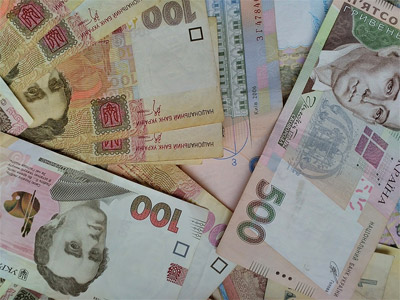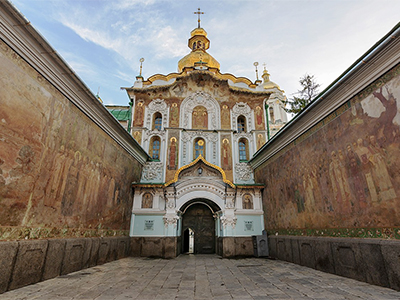 22.05.2023
Hryvnya – Ukrainian currency
22.05.2023
Hryvnya – Ukrainian currencyIs it quite correct to say that Ukraine has «new money»? Yes and no.
Yes, in the sense that new hryvnyas were put into circulation on September 2, 1996. No, in the sense, that the name is very old indeed — at least seven centuries old. In the 17th century Hetman Bohdan Khmelnytsky tried to introduce new hryvnya currency but not with much success. Hetman Mazepa, in the 18th century made another attempt that also failed. Two centuries have passed since then and now we have hryvnyas in circulation.
The name of «hryvnya» dates from the times of Kyiv Rus’ when it was both a monetary and weight unit.
At the start the exchange rate of hryvnya to US dollar was 1.76. It is easy to recognize hryvnyas among bills of paper money of other countries but to make it easier some tips from the National Bank of Ukraine may help.
Hire a private guide in Ukraine.
Ukrainian hryvnya bills of all denominations are made of special white paper which does not fluoresce in the ultra-violet light with watermarks in all parts of each bill. On the face side of bills of all denominations one can see portraits of prominent figures of history and culture of Ukraine, and inscriptions: «Ukraina», or «Ukraina. Natsionalny Bank Ukrayiny» (Ukraine. National Bank of Ukraine), denomination in numerals and letters. In the centre of the back side one can see historical and architectural monuments of Ukraine. Bills are printed in many subdued colours, with guilloched patterns (ornaments, rosettes, nets, and ribbons).
Protection from forgery
Protection from forgery is achieved through the design. Watermarks, seen if one looks at the bill putting it against the light, show the small state coat-of-arms of Ukraine — trident, and on the bills of larger denominations watermarks show the portrait which is a replica of the one on the face side. Counterfeit protection stripe is a narrow strip a millimeter wide with the inscription «Ukraina» within the paper of the bill in denominations of 50 and 100 hryvnyas; it can be seen if held against the light. Embossed patterns elements are found on all the bills except the one in denomination of 1 hryvnya. This raised pattern is detectable to the touch of fingertips. Interlocking pattern is the one to be seen at the face and back sides — it forms a unity if viewed against the light. Rainbow effect print — one colour of the lines of the counterfeit protection grill pattern gradually gives way to another. Antiscanner grill pattern is a net of very thin lines placed at different angles as to each other, and any attempt at copying the bill makes them blurred (they start looking like «moire»). Code patterns — a trident (2, 5, 10 and 20 hryvnya bills); numerals showing the denomination (50 and 100 hryvnya bills) which can be seen if held at the height of the eyes against the light and turned sideways at 45 degrees. Microtest — the. world «Ukraina» repeated continuously on the bills of all denominations and abbreviation «НБУ» (National Bank of Ukraine) which can be read with a magnifying glass. Raised pattern for the blind — a raised pattern in the left-hand comer on the face of the 50 and 100 hryvnya bills, detectable to the touch of fingertips; the pattern is decipherable as the denomination of the bill. Bluish and yellowish thread-like lines can be seen on both sides of the bills of lower denominations in seemingly chaotic disorder.
Ukrainian coins
Coins, released by the National Bank of Ukraine, are called «Kopiykas». 1, 2 and 5 kopiyka pieces are made of silvery metal (stainless steel or aluminum alloy); 10, 25 and 50 kopiyka pieces are made of yellow- colour metal (copper alloy). On the obverse side one can see the small state coat-of-arms of Ukraine — trident, with an ornament of oak leaves and wheat ears around it; the reverse side shows the denomination of the coin in numerals.
In case a bill or a coin is missing any of these protective elements or looks like a counterfeit, it must be taken to the National Bank or the Ministry of Internal Affairs of Ukraine.
-
 27.02.2024
World of pysanka
Embark on a journey into the captivating world of Pysanka, the Ukrainian...
27.02.2024
World of pysanka
Embark on a journey into the captivating world of Pysanka, the Ukrainian...
-
 29.01.2024
Exploring the Treasures of Kyiv’s Lavra Monastery
In the heart of Kyiv lies the venerable Lavra Monastery, a testament...
29.01.2024
Exploring the Treasures of Kyiv’s Lavra Monastery
In the heart of Kyiv lies the venerable Lavra Monastery, a testament...
-
 13.01.2024
Kachanivka, Eden on Earth
Rich in history, it hosted renowned artists, notably poet Taras Shevchenko.
13.01.2024
Kachanivka, Eden on Earth
Rich in history, it hosted renowned artists, notably poet Taras Shevchenko.

